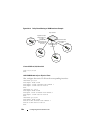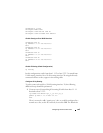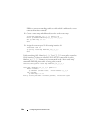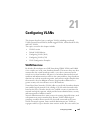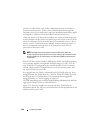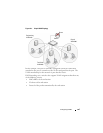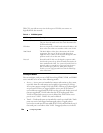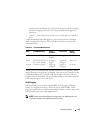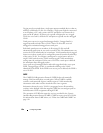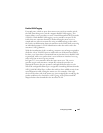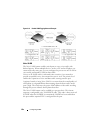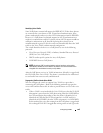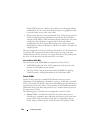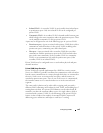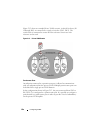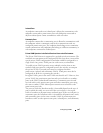
650 Configuring VLANs
Tagging may be required when a single port supports multiple devices that are
members of different VLANs. For example, a single port might be connected
to an IP phone, a PC, and a printer (the PC and printer are connected via
ports on the IP phone). IP phones are typically configured to use a tagged
VLAN for voice traffic, while the PC and printers typically use the untagged
VLAN.
Trunk ports can receive tagged and untagged traffic. Untagged traffic is
tagged internally with the native VLAN. Native VLAN traffic received
untagged is transmitted untagged on a trunk port.
By default, trunk ports are members of all existing VLANs and will
automatically participate in any newly created VLANs. The administrator can
restrict the VLAN membership of a trunk port. VLAN membership for tagged
frames received on a trunk port is configured separately from the membership
of the native VLAN. To configure a trunk port to accept frames only for a
single VLAN, both the native VLAN and the tagged VLAN membership
settings must be configured. If the native VLAN for a trunk port is deleted,
the trunk port drops untagged packets.
Access ports accept untagged traffic and traffic tagged with the access port
PVID. Untagged ingress traffic is considered to belong to the VLAN
identified by the PVID. If the PVID for an access port is deleted, the PVID is
set to VLAN 1.
GVRP
The GARP VLAN Registration Protocol (GVRP) helps to dynamically
manage VLAN memberships on trunk ports. When GARP is enabled,
switches can dynamically register (and de-register) VLAN membership
information with other switches attached to the same segment.
Information about the active VLANs is propagated across all networking
switches in the bridged LAN that support GVRP. You can configure ports to
forbid dynamic VLAN assignment through GVRP.
The operation of GVRP relies upon the services provided by the Generic
Attribute Registration Protocol (GARP). GVRP can create up to 1024 VLANs.
For information about GARP timers, see "What Are GARP and GMRP?" on
page 810.



